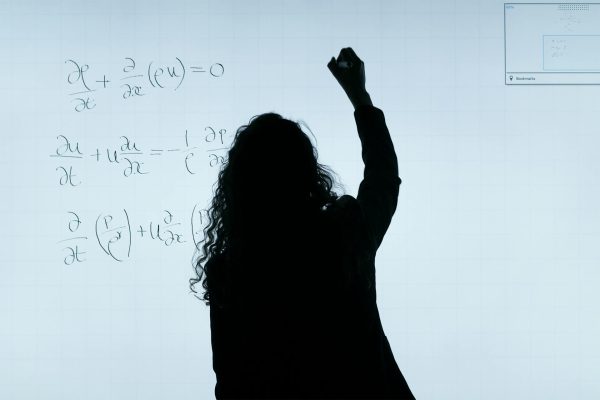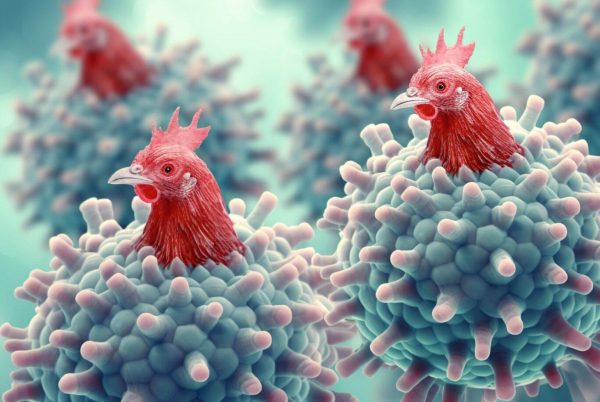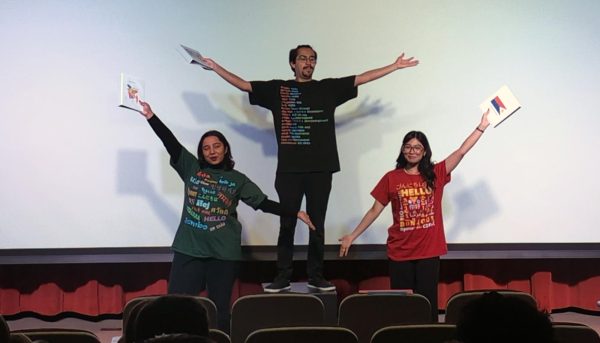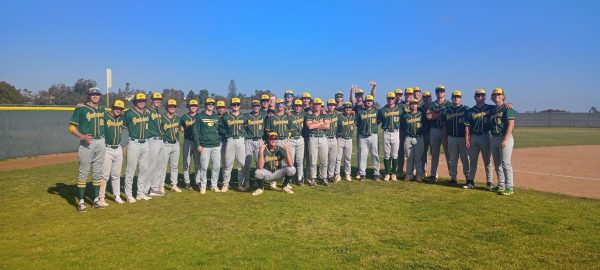Community Service Learning : Learning by Doing
May 14, 2018
Extending learning beyond the classroom: The goal of the Community Service Learning (CSL) Program at Grossmont College.
From mentoring immigrants and refugee youth to pairing ESL students as conversational partners and serving meals to the hungry, students can immerse themselves in numerous opportunities through the Community Service Learning (CSL) program offered at Grossmont College.
What exactly is CSL? It’s a teaching and learning approach that brings in outside experiences such as volunteerism to support and connect meaningful community service with academic instruction through guided reflection.
“The big idea is learning by doing,” said Maria Pak, a psychology instructor at Grossmont and CSL co-coordinator. “When you do something hands-on, you learn it better.”
“What makes it community service learning is that you’re doing something based on community needs,” she added.
A Little Background
The program was developed by the college in 1999. Since then, each semester, some teachers incorporate CSL into their missions as fundamental goals for their students. Through assignments or extra-credit, teachers offer students the opportunity to be responsible and participating members of society. Those who do so strongly believe offering service-learning components into their courses can empower students to succeed.
The program is currently run by three co-coordinators: Maria Pak, Rebecca Howat and Cathy Miller. Their mission is to recognize, advocate and support the educational benefits of learning through community service.
To better understand what CSL is, we must look at its several components. First, there is the process of identifying community needs and determining how the proposed learning service fits into the course learning objectives. The co-coordinators highlight the importance of having meaningful topics that students care about in order to increase their motivations.
“Part of our basic philosophy for events and experiences is that there are meaningful things that students are proud to be part of and that are going to make them engage in the community,” Howat said.
Students learn some background prior to their engagements in the proposed community service and identifying their responsibilities. After being well-prepared and informed, students engage in service with the community through different volunteering opportunities. Finally, students need to complete the final and crucial component of CSL: the reflection. This component consists of critical thinking and making connections between their engagement with the community and what they learned in the classroom.
In the Classroom
Howat, who has helped facilitate the program for three years, explained how the creation of a space for getting students involved in rewarding and meaningful community service is a best practice that will help engage students with the course material and the community that surrounds them.
Students in service-learning classes can benefit academically, professionally and personally.
By applying what they learn in the classroom to solve real-life problems in their community, students obtain a deeper practical understanding of the course material. In addition, the reflection component helps develop students’ critical thinking and problem-solving skills.
Not only does service learning have academic benefits, it also prepares students for their professional lives by developing their interpersonal and relational skills, which are key skills in achieving success. Through service learning, students gain hands-on experience and improved leadership skills that will prepare them for future internships or jobs as well as allowing them to explore or cement their future career choices.
Pak said, “Community service learning opens a lot of doors.”
According to Howat, on a personal level, students can broaden their perspectives, develop an understanding of diverse communities and become more open. “CSL is a way to change people minds about social perception and pave their way toward acceptance, understanding and empathy,” Howat said. With this in mind, students will gain a new sense of self-awareness through service learning.
Pak has always considered doing something for the community as a useful experience, and wanted to have her students gain these experiences through volunteer work. But she became more involved when she noticed the benefits the program had in her classes.
“Not only is it helping the community, but it is also making my classes better,” she said. “It’s something good for the students and the community.”
Outside the Classroom
Pak said she believes everyone can benefit from participating in a service learning program from the students to the teachers as well as the community. She points out that the discussion she has in the classroom are better and are enriched by the students sharing their experiences.
One of the assignments in her class consists of going to an organization called “Yalla” in El Cajon, which allows her students to work with immigrants and refugee youth. Her students must complete 20 hours of community service there. After spending time working with the children, students have to write in a journal to explain what they did. “I gave them something that we talked about in class and then they have to write about how it connects with what they did,” she added.
“Then it becomes not just a thought problem, but a real issue so they are motivated to think about it and to understand,” she said.
Another example of community service learning offered by some of the instructors consists of having students spend a certain amount of time tutoring in the tutoring center and then reflecting on it. Tutoring not only helps students with questions, but it also helps the tutor deepen their understanding by practicing with others.
“The CSL allows you to do something hands-on rather than just thinking about it,” Pak said. “And this is powerful.”
Getting Involved
However, volunteering for 20 hours can be difficult to manage between school and work. As a result, one-time volunteer opportunities are available through classes or extra-credit assignments assigned by the professor. “That’s what we’re going to with our month of service,” Pak said.
“We want to give students different opportunities to get engaged,” Howat added.
The third annual “Grossmont Gives Back: Month of Service” has begun, and a selection of service opportunities are being offered– from serving meals to the hungry at Father Joe’s Village in downtown San Diego to help manage an art project at the 48th annual Chicano Park Day Celebration, and culminating with a dodgeball and food drive tournament.
If you want to get involved in our community, you’re welcome to attend these two remaining events:
- Community Art at Chicano Park: On Saturday, April 21 from 8 a.m. to 5 p.m., enjoy the celebration of the beauty and heritage of Chicano Park at the 48th annual Chicano Park Day celebration. You will be leading and managing art workshops at the event. You can sign-up for a two or three-hour shift and then enjoy an afternoon of music, art and dance.
- Dodgeball Tournament to Benefit Gizmo’s Kitchen: On Friday, April 27 from 1 p.m. to 4 p.m. at the Main Gym, join the all-campus dodgeball tournament that will benefit Gizmo’s Kitchen, the student food pantry on campus. Bring your A- game, at least six of your closest friends and a bag of non-perishable food items to compete against other students, staff and faculty. An awards ceremony and Month of Service pizza party celebration will follow the tournament.
You can sign up at grossmont.edu/campus-life/csl/monthService.aspx.
Service Learning
Teachers in favor of CSL are using this opportunity to offer extra-credit through their classes and to invite students to increase their contribution, extend their awareness and enhance their connection to the larger community.
“The month of service is something that more students can do and get a taste for community service learning,” Pak said.
Howat, who coordinates the events, said she hopes to increase the students’ demands for more connection which will help the students succeed. “It’s a goal for everything – we want them to be successful, to feel empowered, to learn more and to demand more,” she said. “I want them to think that they’re part of this community and that everyone should do their part to foster positive meaningful change internally and externally.”
Natalia Aylett, a Grossmont ESL instructor, has started offering her students the opportunity to participate in CSL by offering them extra-credit during the month of service. Her students can either volunteer at Father Joe’s Village or make donations to the food pantry on campus.
By offering these opportunities, she said she hopes her students will apply what they learn in class to real-life situations. But more than that, she said she strongly hopes they will learn about the many ways to contribute to their society and to help people in need.
“I think this experience at least plants a little seed in them that will drive them to want to volunteer and serve in the future,” Aylett said.
She explained that the majority of her students usually say earning extra-credit was their main motivation to participate into the program; however, after actually taking part into the events, she said students said they realized the benefits of experiencing community service and would be willing to do it again even with no extra-credit to earn.
Aylett said she believes participating in CSL benefits the students by teaching them to broaden their perspectives for ways to help others.
“CSL teaches us that no matter how little we have or how until we feel, there is always something we can give to help others,” she added.
The ESL program chose to incorporate the theme of homelessness through community service learning into their courses. Through listening, speaking, reading and writing lessons, students will learn about this same theme. After learning about the issue, students get the opportunity to help housing and food insecure students on campus by collecting food and toiletries to donate to the on-campus food pantry, Gizmo’s Kitchen.
“Service learning has an academic component to it which helps the student to really understand the issue and to be truly meaningful,” said Kimberley Johnson, ESL instructor.
Some of the service learning assignments consist of managing on-campus food drives and creating toiletry kits. Last semester, the ESL department proudly collected over 700 items for Gizmo’s Kitchen.
With this program, Johnson said she hopes to make students more aware of the community needs and help them build relationships. Most ESL students in level one have only been in the United States for a year and only came to campus to take English courses. As a result, it can be difficult for them to identify themselves as college students. By initiating students into community service learning, it helps them feel like a part of the community.
“We want them to go out of their comfort zone,” Johnson said. “We want them to speak English, listen to English, see English while helping.”
Johnson said she is proud of the effects that CSL has had in her class. She said her students are really engaged and want to know more about it, and she hopes to have a food drive with her class next semester.
“It’s based on the idea of giving back and community-building,” she explained. “My students are gaining leadership skills and interpersonal skills with each other.”
The Future of CSL
Johnson created a 12-minute video promoting the incorporation of CSL into classrooms. Through her video, she highlighted what ESL teachers have done through their classes and what the positive effects were.
“Overall, it’s a good experience,” she said. “It’s great because it changes everything. When it becomes meaningful to them, they do it and it’s amazing how they understand and internalize it.”
Johnson said she is amazed by the students’ engagement toward this project. and truly considers CSL as a way to empower students to become leaders in their community.
Pak explained the different levels of achievement expected by the program. On the student level, she said she hopes they can see the importance of doing community service– not only because it’s a good thing to do, but also because it helps them gain a deeper understanding of what it means to be part of a community. The opportunity to work with local community groups help students to gain valuable experience that will seek them to gain a better understanding of social or other types of issues.
On the educational level, she said she believes community service will help teachers better understand how their students learn. Finally, on the institutional level, CSL co-coordinators strive to make community service an integral part of a student’s education.
“At this point, it is a fairly small endeavor,” Pak said. “We want to see that bigger.”












